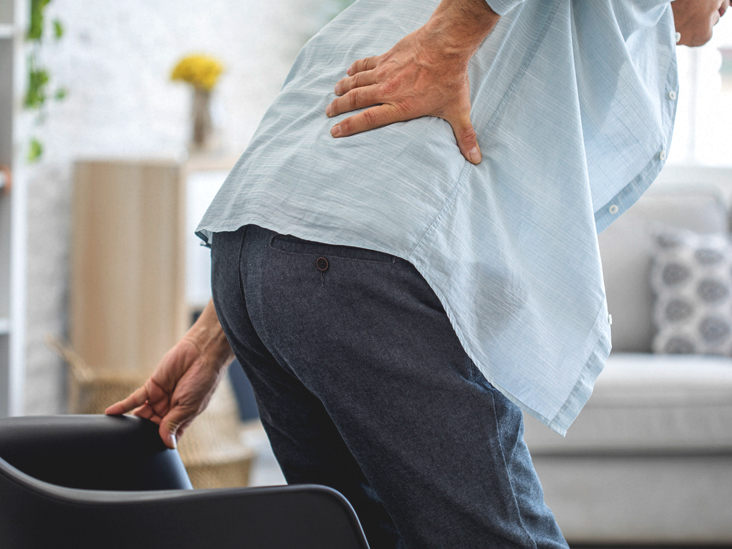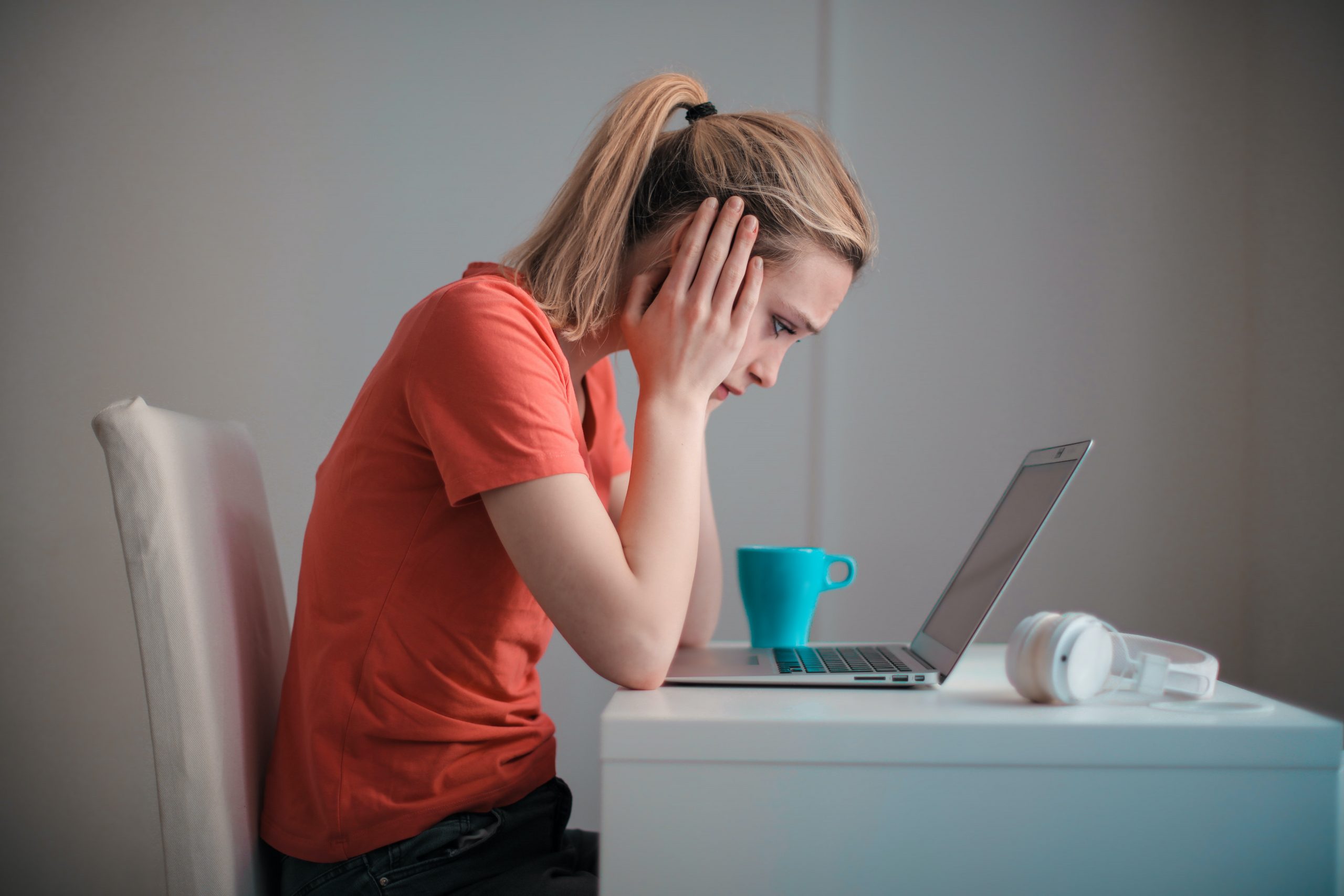For Your Safety - Screening, masks, and sanitation will continue to be implemented at our facility. Please see our blog post for more information.
Back pain is a symptom caused (in most cases) by an injury in one or more parts of the spine. It can be located in the upper, middle, and/or lower back.
This article will talk about the most common: Lower back pain, also known as “lumbago”.
It affects nearly 60% to 80% of people throughout their lifetime. This means that 6 to 8 people out of 10 will experience low back pain. It’s the most common cause of disability in young adults: in the U.S. only, an estimated of 149 million work days are lost yearly due to low back pain, costing $100 to $200 billion a year. It’s a costly condition with repercussions in the patient’s life, the overall productivity, and the healthcare system.
It can be caused by numerous reasons, but the root cause is usually a bad posture. Other causes include accidents, sports injuries, and aging. Even though the low back pain can be disabling, it usually improves without surgery in 90% of the cases.
Anatomy Of The Back
To understand the causes of low back pain, let’s make a brief reviewof each part of the back:
Vertebral Column/Spine. It’s a column formed by approximately 33 bones called “vertebrae”. The spinal cord travels throughout the column. It’s divided into regions:
- Cervical: This corresponds to the neck. It has 7 vertebrae.
- Thoracic: Corresponds to the chest and the middle back. Has 12 vertebrae.
- Lumbar: Corresponds to the lower back. Has 5 vertebrae.
- Sacrum: It’s located in the pelvis. Has 5 fused vertebrae.
- Coccyx: It’s at the end of the sacrum, where our tail used to be millions of years ago. Has 3-4 fused vertebrae.
Vertebrae. These are the building blocks of the column.They go from the base of the skull to the bottom end of the spine. They protect your spinal cord and help you stand straight. The lumbar vertebrae are the biggest ones. They support most of our weight and are responsible for most of our mobility.
Intervertebral disk. These are cushions placed between each vertebra. They have a gel-like nucleus, surrounded by a fibrous ring. They are shock absorbers and help with the mobility of the body.
Spinal cord. It’s a long, thin collection of neurons that goes from the brain to the end of the column. The nerves that go to the upper and lower limbs leave the spinal cord through a hole between each vertebra.
Nerves. They’re a collection of neurons that send and receive instructions from one place to another in the form of electrical impulses, acting like cables.
Muscles. These are the ones responsible for our movements. Each muscle is made of thousands of fibers that fusion themselves to form a cord called “tendon”. The tendon attaches to the bone. When the fibers contract, they pull the bone they are attached to, generating movement.
Ligaments. These are tough, fibrous bands attached to two consecutive bones. They restrict the movement, stabilizing the joints.
Symptoms

The related symptoms of low back pain will depend on the cause, and may include:
- Sharp, stabbing, mild, dull, severe, intermittent, and/or constant pain.
- Symptoms in one buttock/hip/leg, such as muscle weakness, tingling, numbness, burning sensation.
- Worsening with bending, lifting, sitting, standing, and/or walking.
- Sciatica symptoms: Pain from the low back down the glute and leg of one side, numbness, tingling, and/or muscle weakness.
Causes Of Back Pain
Back pain can be caused by numerous factors:
Poor Biomechanics
Human biomechanics can be defined as the way our joints, muscles, bones, and related structures work together to do what our bodies are supposed to do: Move. Good biomechanics are translated into a healthy body. Movement allows the proper distribution of blood throughout the body, aiding the transport of the nutrients every cell needs to function.
Poor biomechanics can occur for a number of reasons, and all of them can cause low back pain:
- BAD POSTURE. In our present lifestyle, static postures are kept for long periods of time, i.e. working on a computer or standing all day. The body adapts to that posture overtime, perceiving it as “normal”. Finally, that can cause conditions or injuries like herniated disks or spinal stenosis, which will be described later.
- SCOLIOSIS. It’s an abnormal curve of the vertebral column, causing deformity in severe cases. An individual can be born with scoliosis, or develop it through childhood or teenage years. Patients with arthritis can develop scoliosis as well.
- OTHER CAUSES. Obesity and flat foot include changes in the biomechanical distribution of the body for long periods of time. Both are risk factors for low back pain.
Disk Injury
The intervertebral disk can get injured as well, causing low back pain and other related symptoms. The most common type of disk injury is the disk herniation:
It’s also known as “slipped” or “ruptured” disk. It happens when the gel-like center of the intervertebral disk pushes against the fibrous ring that surrounds it, squeezing its way through. In early phases of the herniation, the disk has a “bump” that could compress the spinal cord. As it advances, the nucleus can spill into the spinal canal, increasing the compression of the spinal cord and the nerves.
This is a common consequence of a bad posture. The bad posture compresses the intervertebral disk unevenly, e.g. does more pressure in the anterior part of the disk. This pushes the gel-like center backward, forcing its way through and creating the bump in the weakest area of the fibrous ring.
Other causes of disk herniation include:
- Accidentally with lifting, pulling, bending, or twisting with heavy loads.
- Wear and tear. As we age, the intervertebral disks gradually “dry”, losing their shock-absorbing properties and making them susceptible to injury.
The symptoms of a disk herniation may vary depending on many factors such as: exact place and size of the bump, area of the nerve injured, age… to name a few. They can range from mild to severe low back pain, and often include muscle weakness, tingling, numbness, and/or burning sensation in one leg, as well as gait impairment. Symptoms can last from weeks to even years.
Spinal Stenosis
A stenosis is an abnormal narrowing of a canal within the body. Therefore, a spinal stenosis is an abnormal narrowing of the spinal canal, where the spinal cord goes through.
A common cause of a spinal stenosis is the collapsing of intervertebral disks. This is common with age due to “wear and tear”. The disks lose their normal height and get closer to each other, narrowing the space of the spinal cord. This is also referred as “osteoarthritis”.
The body might respond to this by growing new bone on the edges of the vertebrae – called “spurs”- which worsen the stenosis condition and could compress more nerves.
Symptoms of spinal stenosis resemble the ones of a herniated disk: mild to severe low back pain, and include tingling, burning, weakness or numbness sensations in one limb.
Traumatic Event
Specific movements like bending, lifting, or twisting with heavy loads could cause low back pain. These are usually related to muscular spasms and should cease after 48-72 hours. The pain is commonly accompanied by stiffness and soreness.
Sports Injury
Direct contact sports like rugby or football may cause low back pain. Also, over-activity can cause muscle soreness in the low back muscles. Besides the low back pain, other symptoms include stiffness and soreness that goes away in 2-3 days.
Other Causes
A stressful environment, depression, anxiety, and smoking are risk factors for low back pain.
Red Flags
If you have the following medical history or if you are experiencing the following symptoms with your low back pain, please consult a healthcare professional:
- Osteoporosis.
- History of cancer.
- Constant pain, that doesn’t decrease despite your position or activity level.
- Fever, chills.
- Unexpected/unintentional weight loss.
- Numbness, tingling or weakness in the groin area, both arms or both legs.
- Increase of pain with coughing or sneezing.
- Burning sensation while urinating.
- Problems with bowels/bladder control.
- Pain that prevents from sleeping.
- Unresponsive back pain therapies.
Treatment
Most of the cases of low back pain -and its emotional and economic consequences- can be prevented with physical activity and an active lifestyle.
For the ongoing cases of low back pain though, physical therapy and massage therapy are two of the best options for a non-invasive treatment to this disabling condition. Both help to reduce pain, improve mobility, and enhance the overall recovery in the short-term:
- Physical therapy has shown to be very effective in patients with low back pain. Furthermore, physical therapy treatment in the first two weeks of experiencing lower back pain substantially reduces costs and healthcare resources over a 2-year period. This means quality-life improvement for the patient, reducing or even avoiding painkillers and going back on track faster. (7)
Regardless of how long you’ve been experiencing low back pain, physical therapy without pharmacologic treatment is recommended as the first option of treatment. (8)
- Massage therapy has shown to provide significant benefits, including relaxation, pain reduction in the short-term, and increase of mobility. (9)
Pharmacologic therapy is recommended for patients without positive outcomes of these therapies. The last resort will always be surgery.
References
- Elrich, G. Low back Pain. Bulletin of the World Health Organization. 2003;81:671-676. Available at:http://www.who.int/bulletin/volumes/81/9/Ehrlich.pdf
- Duthey, B. Background Paper 6.24. Low Back Pain (2004). World Health Organization. Available at: http://www.who.int/medicines/areas/priority_medicines/BP6_24LBP.pdf
- Hoy, D., March, L., Brooks, P., et al. The global burden of low back pain: estimates from the Global Burden of Disease 2010 study. Annals of the Rheumatic Diseases 2014;73:968-974. Available at: http://ard.bmj.com/content/73/6/968
- Most Americans Live With Low Back Pain – and Don’t Seek Treatment. From the American Physical Therapy Association. Alexandria, VA. April, 4, 2012. Available at: http://www.apta.org/Media/Releases/Consumer/2012/4/4/
- Low Back Pain. American Association Of Neurological Surgeons. Available at: http://www.aans.org/Patients/Neurosurgical-Conditions-and-Treatments/Low-Back-Pain
- Low Back Pain. American Academy Of Orthopaedic Surgeons. Last reviewed: Dec, 2013. Available at: https://orthoinfo.aaos.org/en/diseases–conditions/low-back-pain/
- Child, J., Fritz, J., Wu, S., Flynn, T., Wainner, R., Robertson, Eric., et al. Implications of early and guideline adherent physical therapy for low back pain on utilization and costs. BMC Health Services Research. 2015, 15:150. Available at: https://bmchealthservres.biomedcentral.com/articles/10.1186/s12913-015-0830-3
- Qaseem A, Wilt TJ, McLean RM, Forciea MA. Noninvasive Treatments for Acute, Subacute, and Chronic Low Back Pain: A Clinical Practice Guideline From the American College of Physicians. Annals of Internal Medicine. 2017;166:514–530. Available at: http://annals.org/aim/fullarticle/2603228/noninvasive-treatments-acute-subacute-chronic-low-back-pain-clinical-practice
- Kumar, S., Beaton, K., & Hughes, T. (2013). The effectiveness of massage therapy for the treatment of nonspecific low back pain: a systematic review of systematic reviews. International Journal of General Medicine, 6, 733–741. Available at: https://www.ncbi.nlm.nih.gov/pmc/articles/PMC3772691/

